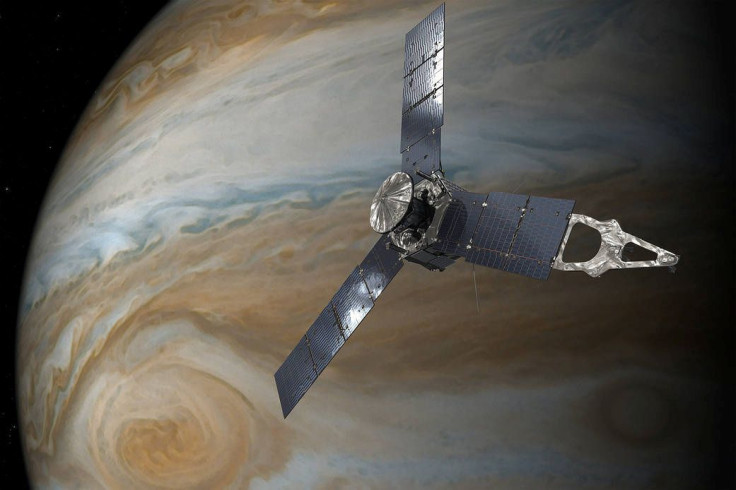Cyclones surrounding Jupiter’s poles are unlike anything else encountered in solar system

Jupiter’s atmospheric winds last longer than similar atmospheric processes on Earth, according to data collected by NASA’s Juno mission. The planet's poles are said to be blanketed by geometric clusters of cyclones.
The massive cyclones that surround Jupiter's north and south poles are enduring atmospheric features, based on other Juno science results that were recently released. The four-article collection is published in an edition of the journal Nature. The recent findings will perk up an understanding of the planet’s core mass, interior structure and eventually, its origin.
The depth to which the roots of the planet’s belts and zones extend has been a mystery for several years. Yohai Kaspi, lead author of a Nature paper on Jupiter’s deep weather layer, said that Galileo viewed the stripes on Jupiter over 400 years ago. “Now, following the Juno gravity measurements, we know how deep the jets extend and what their structure is beneath the visible clouds,” Kaspi said, adding that it is like going from a 2-D picture to a 3-D version in high-definition.
Principal investigator of Juno from the Southwest Research Institute Scott Bolton said the new science results are yet another example of Jupiter’s curve balls. He also thinks of them as a testimony to the value of exploring the unknown with next-generation instruments.
The results suggest that Jupiter’s weather layer is larger and extends much deeper than previously thought. The Jovian weather layer contains approximately one percent of Jupiter’s mass.
Kaspi noted that by contrast, Earth’s atmosphere is less than one-millionth of its total mass. He added that is surprising that Jupiter has such a huge region that rotates in separate east-west bands.
These discoveries were made possible thanks to Juno’s unique orbit and evolutionary high-precision radio science as well as infrared technologies. “Juno is only about one third the way through its primary mission, and already we are seeing the beginnings of a new Jupiter,” Bolton said in a statement posted on NASA’s website.
Another result suggests that the planet rotates nearly as a rigid body. Tristan Guillot, lead author of the paper on Jupiter’s deep interior, said that future measurements by Juno will be helpful in understanding how the transition works between the weather layer and the rigid body below.
Gas giant Jupiter is the largest known planet in our solar system. It is the fifth planet from the sun.
Juno has been orbiting Jupiter since 2016. It is the second known spacecraft to circle the planet after Galileo.






